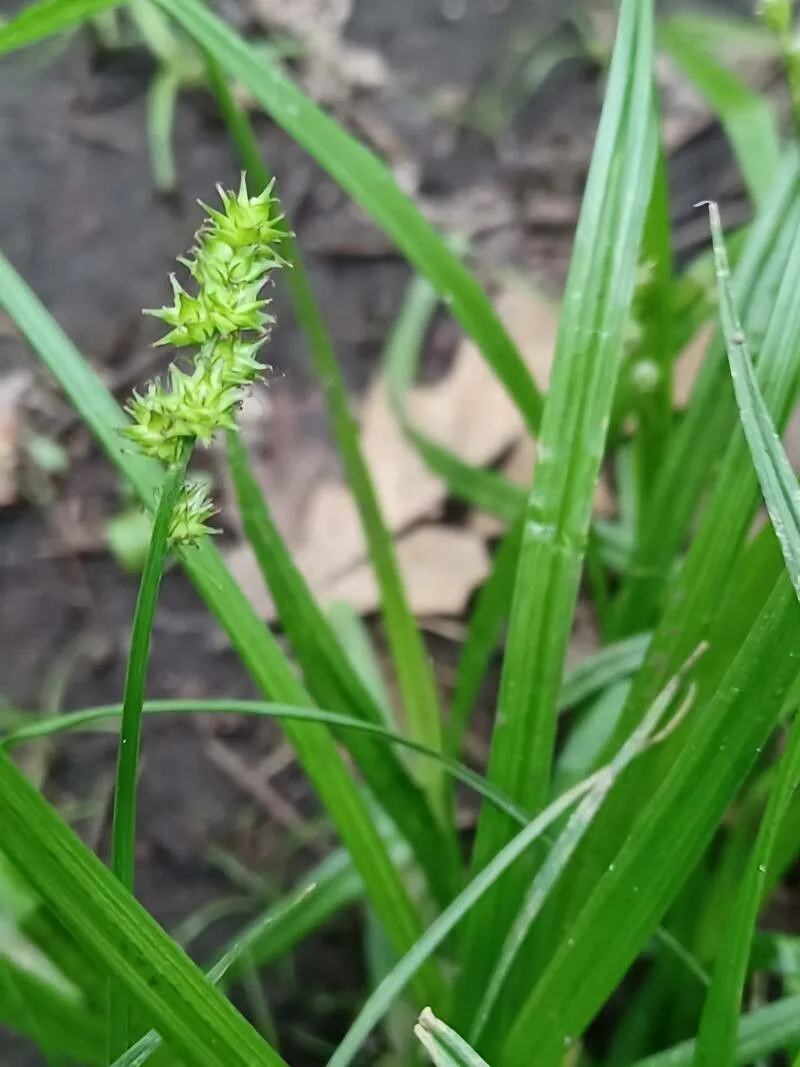
Author: Muhl. ex Willd.
Bibliography: Sp. Pl. ed. 4. 4: 237 (1805)
Year: 1805
Status: accepted
Rank: species
Genus: Carex
Vegetable: Unknown
Observations: SE. Canada to NC. & E. U.S.A.
Bur-reed sedge, scientifically known as Carex sparganioides, is a significant yet often overlooked member of the Cyperaceae family. This perennial sedge is indigenous to a wide range of environments, flourishing primarily across Southeastern Canada, as well as throughout the Eastern United States down to North Carolina. Its robust adaptability to various terrains and climates has made it a prevalent species across these regions.
First formally described in 1805 in the fourth edition of “Species Plantarum” by botanists Muhlenberg and Willdenow, Carex sparganioides embodies the diverse and intricate nature that characterizes many sedge species. Resilient and hardy, this plant typically thrives in moist, wooded areas, often forming dense colonies along stream banks, wetlands, and other damp environments.
The appearance of Bur-reed sedge is distinctive and can be recognized by its erect, grass-like leaves and its unique flowering structure. It produces clusters of small, greenish-brown flowers, which eventually give way to seed heads that resemble small burrs, hence its common name. This characteristic not only aids in its identification but also plays an essential role in its reproductive strategy, facilitating seed dispersion through attachment to passing animals.
Ecologically, Carex sparganioides serves as an important habitat component, providing cover and food for a variety of wildlife. Its dense foliage offers shelter for insects and small vertebrates, while its seeds provide nourishment for numerous bird species. Additionally, this sedge contributes to soil stabilization and water filtration in its native habitats, underscoring its environmental importance.
Botanists and ecologists continue to study Bur-reed sedge for its ecological roles and its adaptive capabilities. As habitats face increasing pressures from human activity and climate change, understanding the dynamics of species like Carex sparganioides becomes ever more critical. Its resilience and adaptability make it a key species for restoration and conservation efforts in wetland and riparian ecosystems.
Carex sparganioides, with its unassuming yet vital presence, remains an important subject in the broader study of plant ecology and conservation. Its widespread distribution and ecological roles present ample opportunities for further research, emphasizing the need to preserve such species that contribute significantly to biodiversity and ecosystem health.
Eng: bur-reed sedge, bur reed sedge, burreed sedge, loose-headed bracted sedge
Fra: carex faux-rubanier
En: Bur-reed sedge, Burr-Reed Sedge, Bur reed sedge, Burreed sedge, Loose-headed bracted sedge
Fr: Carex faux-rubanier
Taken Jun 10, 2022 by Renée-Louise Lamontagne (cc-by-sa)
Taken Jun 9, 2021 by Yvonne Pandke (cc-by-sa)
Taken Jul 15, 2014 by EOL − Erin Faulkner (cc-by-nc)
Taken Jan 1, 1900 by EOL − USDA NRCS Wetland Science Institute. (public)
Taken Jun 4, 2008 by EOL − Chicago Botanic Garden 2008 (cc-by-nc-sa)
Taken Jun 4, 2008 by EOL − Chicago Botanic Garden 2008 (cc-by-nc-sa)
Taken Jun 9, 2021 by Yvonne Pandke (cc-by-sa)
Taken Nov 8, 2013 by EOL − Daniel Carter (cc-by-nc)
Taken Nov 8, 2013 by EOL − Daniel Carter (cc-by-nc)
Taken Jun 9, 2021 by Yvonne Pandke (cc-by-sa)
Family: Myrtaceae Author: (F.Muell.) K.D.Hill & L.A.S.Johnson Bibliography: Telopea 6: 402 (1995) Year: 1995 Status:…
Family: Rubiaceae Author: Pierre ex A.Froehner Bibliography: Notizbl. Bot. Gart. Berlin-Dahlem 1: 237 (1897) Year:…
Family: Sapindaceae Author: Koidz. Bibliography: J. Coll. Sci. Imp. Univ. Tokyo 32(1): 38 (1911) Year:…
Family: Asteraceae Author: A.Gray Bibliography: Pacif. Railr. Rep.: 107 (1857) Year: 1857 Status: accepted Rank:…
Family: Fabaceae Author: Medik. Bibliography: Vorles. Churpfälz. Phys.-Ökon. Ges. 2: 398 (1787) Year: 1787 Status:…
Family: Aspleniaceae Author: (Cav.) Alston Bibliography: Bull. Misc. Inform. Kew 1932: 309 (1932) Year: 1932…